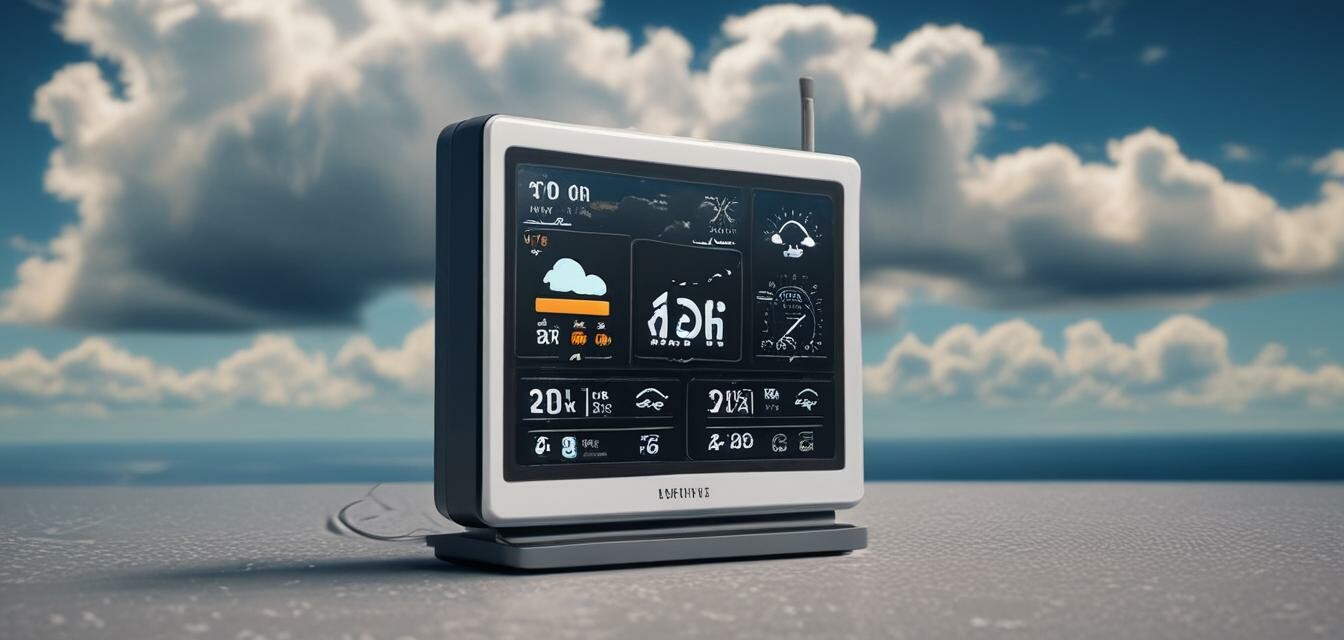
How to Choose the Best WiFi Weather Station
Key Takeaways
- Understand the various features of WiFi weather stations.
- Determine what weather parameters matter most for your needs.
- Consider the integration with other smart home devices.
- Look for user-friendly interfaces and mobile app compatibility.
- Compare prices and read through product reviews before purchasing.
Selecting the right WiFi weather station can seem overwhelming with so many options available today. This comprehensive guide will walk you through the essential features, latest technologies, and various factors to consider while making an informed choice. Whether you are a beginner or an experienced weather enthusiast, you can find valuable insights here.
Why Choose a WiFi Weather Station?
WiFi weather stations provide real-time data about weather conditions directly to your device, allowing you to stay updated wherever you are. With advanced connectivity features, you can integrate with smart home devices, access forecast data, and analyze historical weather trends.
Key Features to Consider
| Feature | Description |
|---|---|
| Temperature Sensors | Look for models with multiple sensors for accuracy. |
| Humidity Measurement | Humidity tracking is crucial for many applications, especially gardening. |
| Wind Speed and Direction | Essential for those monitoring outdoor activities. |
| Rain Gauge | Helpful for tracking rainfall amounts, especially for gardeners and farmers. |
| Mobile App Integration | Allows monitoring weather data on your smartphone easily. |
Determining Your Needs
Before making a purchase, identify your specific weather monitoring needs. Here are some helpful questions to ask:
- What weather conditions do you want to track? (e.g., temperature, humidity, rainfall)
- Do you need real-time alerts for severe weather?
- Are you interested in historical weather data tracking?
- How will you use this data? (e.g., gardening, outdoor sports, personal interests)
Understanding Weather Station Technologies
Familiarize yourself with the different technologies used in WiFi weather stations:
- Wireless Connectivity: Most modern stations utilize WiFi or Bluetooth.
- Smart Integration: Some devices can connect to smart home systems for enhanced automation.
- Sensors: Different weather elements require specialized sensors; ensure you choose a model that fits your requirements.
Comparing Different Models
When looking to compare different WiFi weather stations, consider creating a comparison table. Here’s an example:
| Model | Price | Temperature Sensor | Rain Gauge | Mobile App |
|---|---|---|---|---|
| Model A | $100 | Yes | No | Yes |
| Model B | $150 | Yes | Yes | Yes |
| Model C | $200 | Yes | Yes | No |
Price Considerations
WiFi weather stations vary in price based on their features. Generally, you can expect to pay:
- Basic Models: $50 - $100
- Mid-Range Models: $100 - $200
- High-End Models: $200 and above
Reading Reviews
Before finalizing a purchase, it’s essential to read user reviews and product comparisons. This will give you insights into the real-world performance and reliability of the models you're considering. To explore user experiences, you can check out our detailed buying guides that focus on product reviews.
Pros
- Real-time weather data at your fingertips.
- Enhanced accuracy with multiple sensors.
- Convenient mobile app access.
- Smart home integration possibilities.
- Helps with planning outdoor activities.
Cons
- Initial cost may be high for advanced models.
- Some models require regular maintenance.
- Interference may occur if placed near incorrect sources.
Conclusion
Choosing the best WiFi weather station for your needs involves evaluating essential features, understanding your specific weather monitoring goals, and staying informed through user reviews. By following the guidelines in this article, you can confidently select a weather station that keeps you updated about your local conditions. For more insights, feel free to explore our wireless weather stations and find the right gadget that fits your needs.
Tips for Beginners
- Start with a basic model and upgrade as needed.
- Familiarize yourself with weather terminology.
- Regularly check for software updates for your device.
- Consider joining online forums to share experiences with other weather enthusiasts.